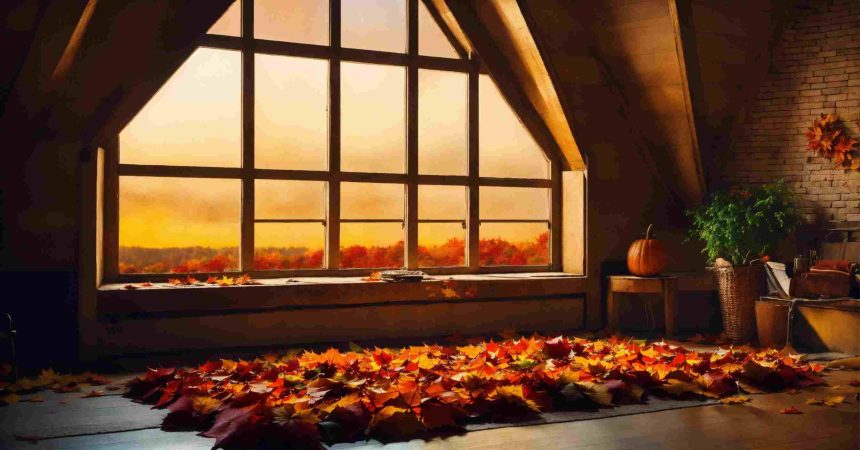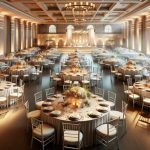Gable windows, also known as prow windows, are a unique architectural feature that can add striking aesthetic appeal as well as functionality to a home. Installed in the upper portion of a gable end wall, these angled bay windows create extra space filled with natural light. Read on to learn all about the history, benefits, design options and installation considerations for gable windows.
A Brief History of Gable Windows
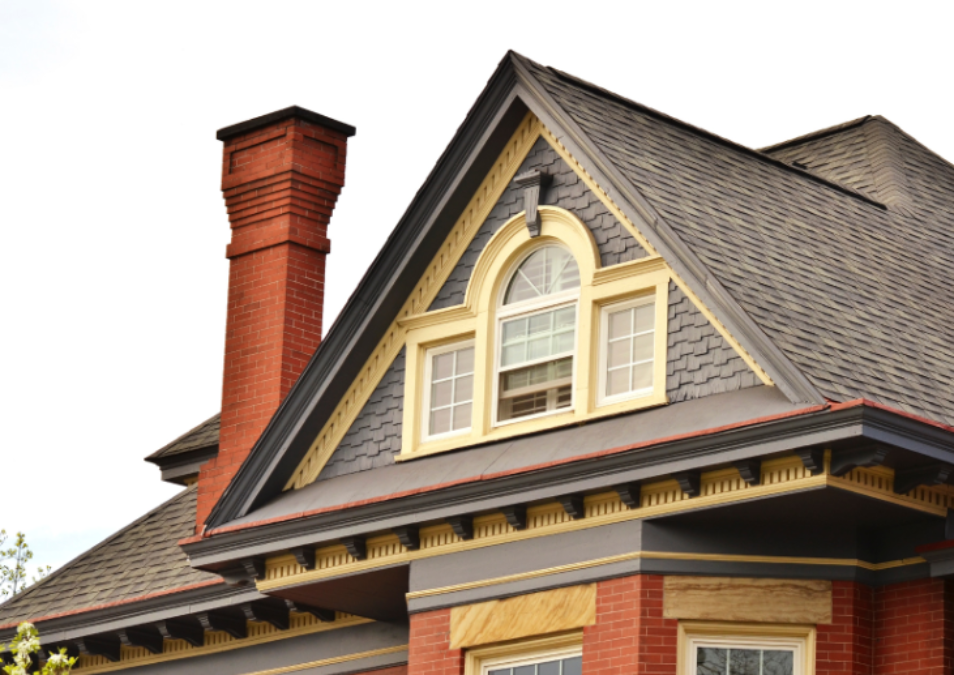
Gable windows have been used in architectural design for centuries. Early English cottages and Tudor style buildings often featured protruding upper story windows to maximize light and space inside attic areas.
In early American building, gable windows became a hallmark of certain vernacular house styles. Cape Cod and Saltbox homes, as well as Craftsman bungalows, commonly incorporated gable windows to enhance livability. The angled windows better illuminated and ventilated upstairs rooms and expanded usable interior volume.
Over time, gable windows evolved from purely functional to more ornate decorative elements. Scrollwork headers and other intricate details were added to complement architectural styles like Queen Anne and Gothic Revival. Today, gable windows remain popular for both their aesthetic and practical qualities.
The Benefits of Gable Windows
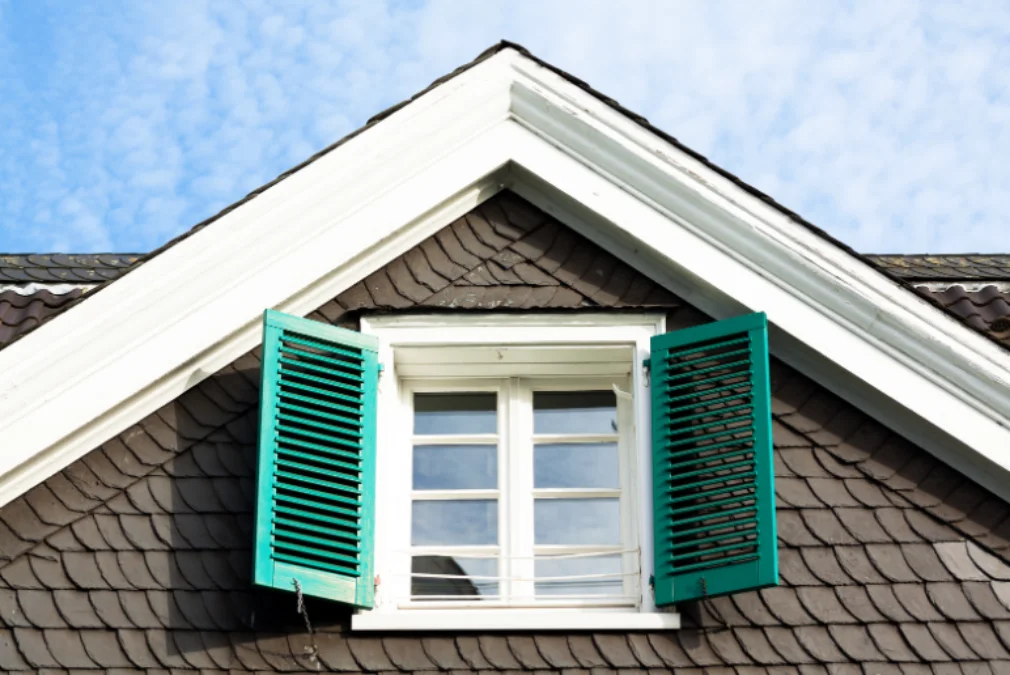
There are many excellent reasons to incorporate gable windows into residential building and remodeling projects:
| Added Living Area | By extending outward, gable windows effectively expand interior space. They make small attics, lofts and upstairs hallways feel more open and usable. The angled bay shape carves out room for furniture, play areas, desks or storage. |
| Abundant Natural Light | Gable windows usher ample natural light into spaces that would otherwise feel dark and confined. By facing multiple directions, they allow bright illumination from sunrise to sunset. This helps create cheerful, inviting interiors. |
| Enhanced Ventilation | The outward-facing glass and sloped form also work to promote air circulation. Gable windows essentially act as enhanced vents, allowing stuffy attics and rooms to breathe. Stale air can easily escape while fresh air flows in. |
| Curb Appeal | Gable windows give rooflines visual interest and dimension. They break up flat exterior planes to showcase architectural detail. This adds character and charm to the homes exterior that boosts curb appeal. |
| Expanded Views | The angled position of gable windows provides a broader scope of vision. Instead of a fixed rectilinear view, you can take in more of your surrounding property and the neighborhood. This makes interior spaces feel more connected to the outside. |
Maximizing Natural Light with Gable Windows
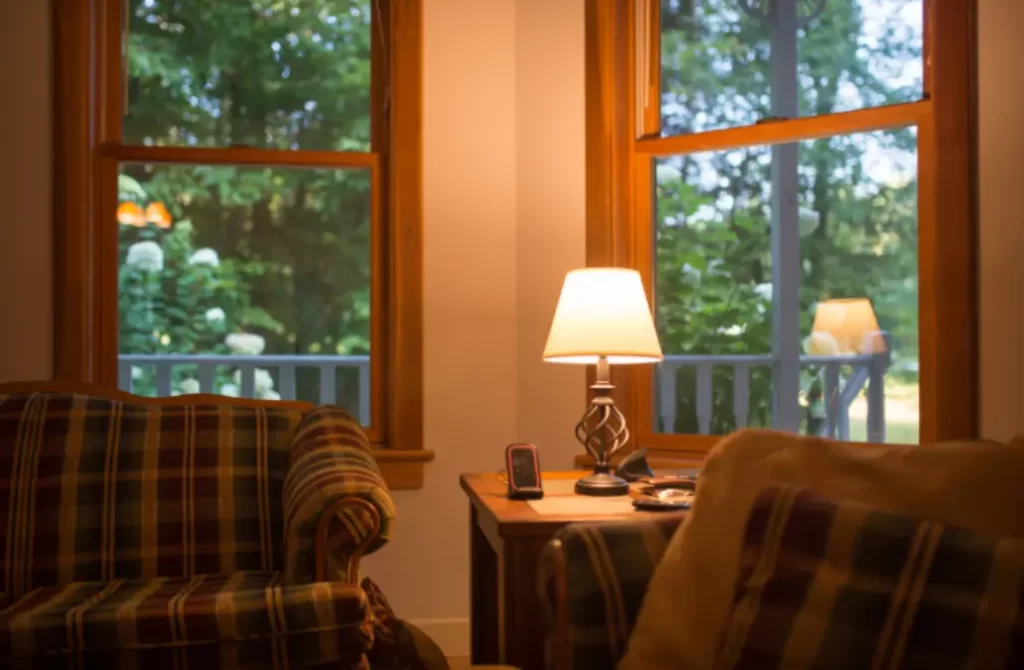
One of the primary reasons for installing gable windows is to maximize natural light within your living spaces.
- Window Placement: Positioning your gable windows strategically can significantly impact the amount of natural light that enters your home. Consider the path of the sun throughout the day and the orientation of your home when determining the optimal placement for your gable windows.
- Window Size: Larger gable windows will allow more natural light to enter your home. However, it is important to strike a balance between window size and the structural integrity of your home. Your contractor can help you determine the appropriate window size based on the dimensions of your gable-end wall.
- Window Treatments: While gable windows can flood your interior spaces with natural light, you may want to consider window treatments for privacy or light control. Sheer curtains or blinds can help diffuse the light and create a softer ambiance, while blackout curtains can provide complete light control when needed.
- Interior Design and Finishes: To maximize the impact of natural light from your gable windows, consider incorporating light-reflective surfaces and finishes in your interior design. Light-colored walls, floors, and furnishings can help bounce and distribute the natural light throughout the space, creating a bright and airy atmosphere.
Gable Window Design Considerations
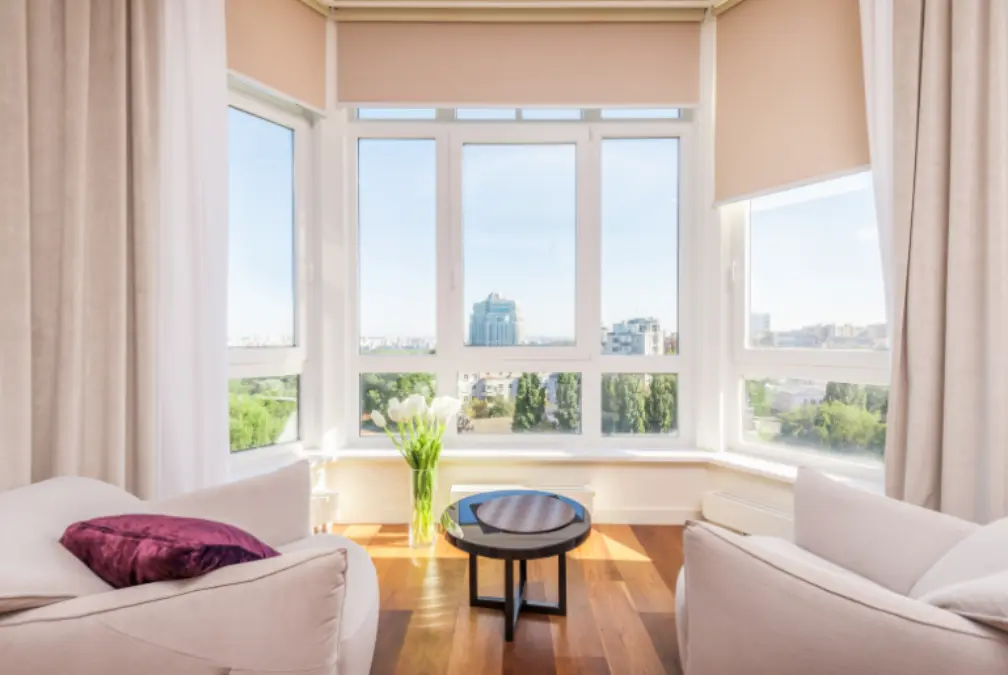
Gable windows come in many aesthetic styles, sizes, materials and configurations to mesh with your homes architecture.
Window Style
- Traditional triangular gable window with single pane of glass.
- Arched gable window with curved top portion.
- Palladian gable window with arched center and two side windows.
- Shed dormer style gable window installed in a sloped roof.
Window Materials
- Wood frames offer classic look but require more maintenance.
- Vinyl is low-maintenance, affordable but lacks customization.
- Fiberglass combines low-maintenance with some customization.
- Aluminum or metal frames suit modern industrial aesthetics.
Window Operations
- Fixed/inoperable for a clean, unobstructed appearance.
- Casement windows that crank out for ventilation.
- Awning style gable windows hinged at the top.
- Combine fixed and operable sections in the same window.
Window Glass
- Double or triple pane glass for energy efficiency.
- Low-E coatings to reduce heat transfer.
- Tinted, frosted or patterned glass for privacy.
- Tempered or impact-resistant glass in some regions.
Grille Patterns
- Divide glass into panes with grille or muntin patterns.
- Traditional colonial, prairie, or diamond grille designs.
- Modern grilleless style for an unobstructed view.
Window Trim
- Simple clean lines or more ornate exterior moldings.
- Match home’s existing trim color and architectural style.
- Wood, polyurethane, PVC or aluminum trim options.
Hardware & Accessories
- Decorative hardware finishes like bronze or brass.
- Faux wrought iron grilles for added detail.
- Built-in shades, blinds or screens.
- Exterior awning or roof overhangs for shading.
Structural Considerations for Installation
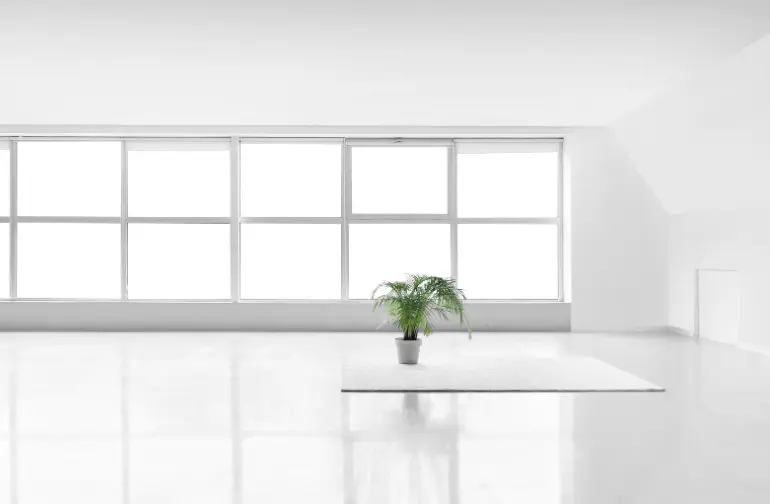
While visually stunning, gable windows do require careful structural planning and construction expertise for successful installation:
- Framing: Reinforced framing must be erected to support the weight and dimensions of the protruding bay. Headers, king studs, cripple studs and custom bracing prevent sagging and maintain integrity over time, even under snow loads and high winds.
- Flashing: Proper moisture proofing and layered, redundant flashing is vital to prevent leaks, ice dams, moisture damage and mold growth. Composites like self-adhering rubberized asphalt function best. Always integrate flashing with roofing and sidewalls.
- Roofing: Gable windows warrant customized cuts for a tight seal against sloping roof lines. Account for proper drainage gradients. Roof jacks, end caps and careful shingling integration is imperative. Retrofits often require total replacement of surrounding roof sections.
- Ventilation: Incorporate sufficient airflow pathways into the design to prevent condensation and allow temperature regulation. Roof vents, soffit vents and vapor barriers must interconnect with the gable bay.
- Insulation: Since gable windows protrude outward, extra insulation helps prevent thermal bridging through surrounding walls and ceilings. Expanding foam fillers around frames also seals gaps.
With careful planning and construction, you can safely and successfully incorporate handsome gable windows into residential projects. Just be sure to partner with experienced architects, designers and building contractors throughout the process. Your one-of-a-kind gable windows will provide added aesthetics and functionality for years to come.
Types of Gable Windows
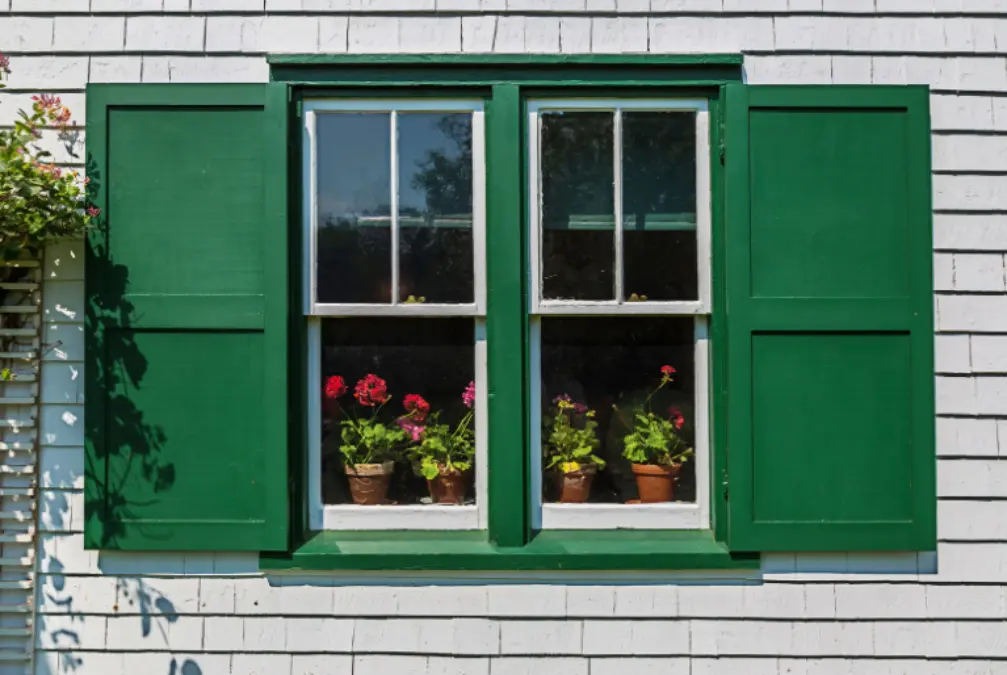
There are a variety of gable window classifications based on general shapes and opening functionality:
- Angled Bay Window: The most common style features angled glass extending seamlessly from the gable wall. These simple, triangular windows match the roof pitch. Casement windows often fill the bay.
- Box Bay Window: Instead of a basic triangle, box bay gable windows have more of a trapezoidal shape. The sides extend outward parallel to the ground before angling upwards with the roofline. These create even more usable interior space.
- Curved Bay Window: Rather than flat glass panes, curved bay gable windows have concave and convex glass shapes. These graceful rounds and half-rounds add a beautiful focal accent to exterior facades.
- Polygonal Bay Window: For a truly custom look, polygonal bay gable windows have glass segments connecting at unconventional angles. Diamond, octagonal and other complex geometric panes make a unique statement.
- Dormer Window: Dormer windows feature a fully enclosed, structural bay topped by it’s own miniature roofline. The boxed-in shape provides enhanced depth and livability inside. Sidewalls allow for bench seating and storage.
- Cupola: A rounded or squared tower-like structure crowns the roofline of some homes. Multi-sided glass cupola windows all around flood the compact room with light. Staircases lead up to secluded coffee nooks, art studios and cozy reading retreats.
There are infinite possible variations on these gable window types. Work with innovative designers to create the perfect custom solution for your residential vision!
Unique Gable Window Ideas
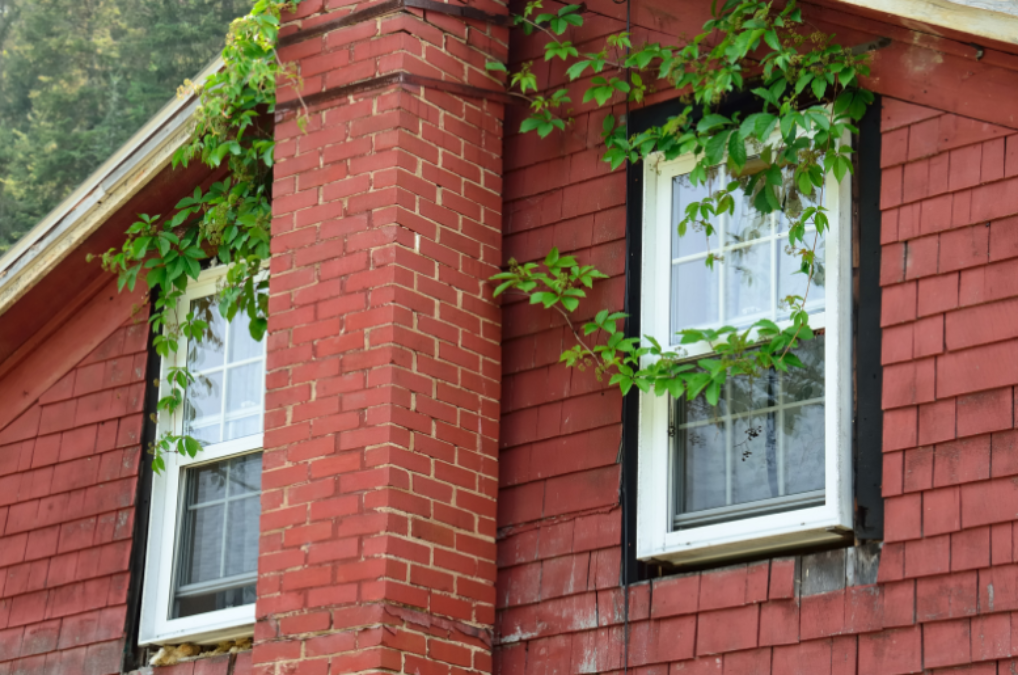
Beyond classic angled and boxed designs, there are many creative gable window implementations to impart style.
| Dramatic Oversize | An enlarged cutout for the window makes a bold statement amidst roof lines. Taller and wider dimensions increase light and give the impression of soaring verticality. |
| Matching Pairs | Position two identical gable windows symmetrically opposite each other on a central roof ridge. This balanced look brings rhythmic harmony, like eyes peering whimsically across the home’s lid. |
| Triple Trend | For even more dynamic symmetry, three same-sized gable windows clustered together make an angular statement full of visual energy. The triangular trio invites the eyes to connect the dots in an energetic zig-zag. |
| Mural Mosaic | Abstract and representational mural designs crafted from small panes of colored glass turn an ordinary gable window into a glittering mosaic masterpiece. Backlighting reveals the art at night. |
| Winding Stair Well | Multi-level homes can feature a stairway culminating in a skylighted gable window, allowing sunlight to wash down through the core of the structure. It creates the effect of a climbing tower capped by an illuminated beacon-like cupola. |
| Four Season Sunroom | An enclosed glass structure nestled under the gable eave makes a perfect year-round garden sanctuary or breakfast nook. Load-bearing supports allow 360-degrees of light and views. |
| Gothically Pointed | The inverse angles of a steeply peaked gable roof echoed by Gothically arched window headers makes for an architectural style both ancient and avant-garde. Casement windows invite gushing gusts of air. |
| Eclectic Geometry | Combine disparate framed window sections into one heterogeneous gable collage. Mismatched rectangles, trapezoids, triangles and circles create surprises. The whole kaleidoscopic effect transcends the sum of it’s parts. |
FAQs
Casement, awning and double-hung windows operation modes all adapt well into gable framing depending on accessibility, ventilation and egress needs. Fixed picture windows also fill gable ends beautifully.
Tailor framing materials, trims, surrounds, shutters, hardware and glass styles to complement your existing aesthetics. Size proportionally, maintain roof lines and use consistent colors and ornamental details for cohesion.
Skylights, cupolas and strategically placed roof windows can maximize light. Dormer construction replaces parts of sloped or flat roofing to create new gable protrusions suited to windows.
Unlike typical replacements, gable windows require engineering know-how regarding structural load distribution, weatherproofing intricacies, custom flashing, framing mods, insulation etc. Improper workmanship leads to expensive problems.
Get multiple bids, use economical but durable materials like vinyl framing and supply your own interior trim finishes. Provide helpers for basic tasks to reduce labor costs. But never skimp on structural elements or vital protective building paper and house wraps!
Conclusion
The possibilities for gable windows are truly endless. Always evaluate options for complementing your home’s existing architecture while expanding livable space and illumination. Giving your home a custom upgraded focal point will reward your family for generations to come while increasing resale value as others appreciate the enhanced aesthetics. With good planning and collaboration with specialized architects and builders, even the most ambitious and adventurous gable window designs can become breathtaking realities. Let your imagination soar!


